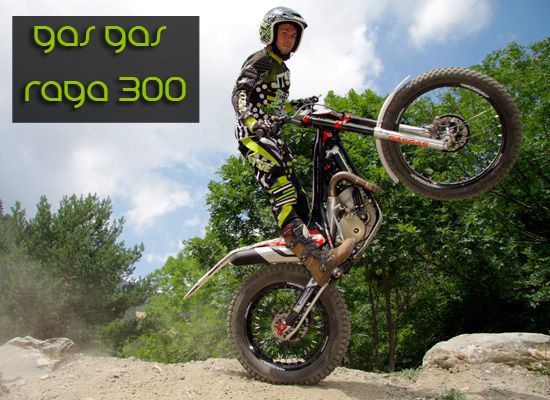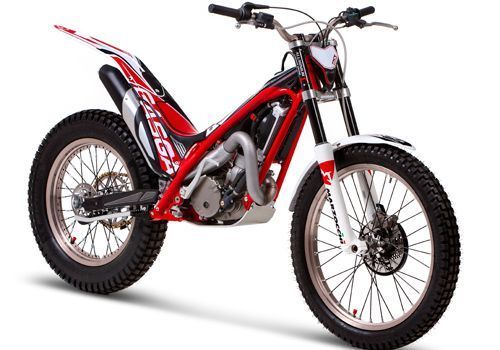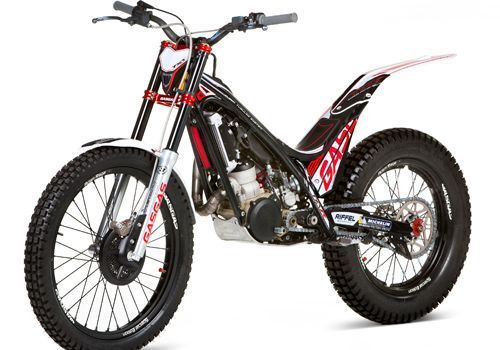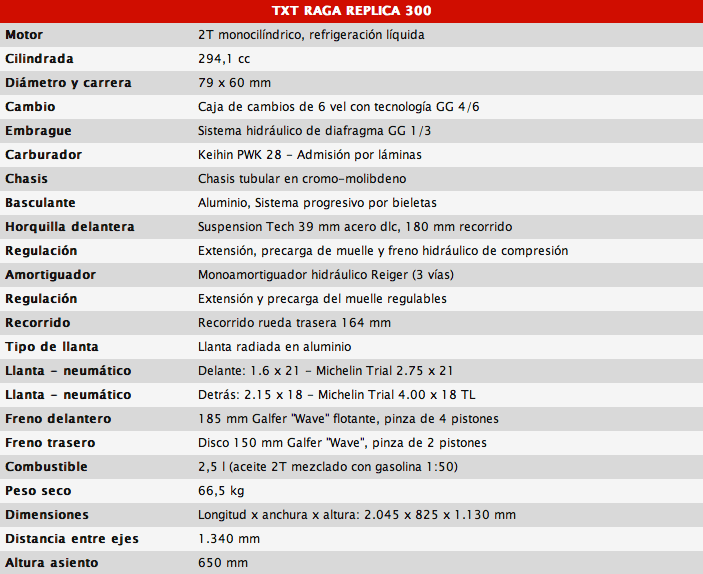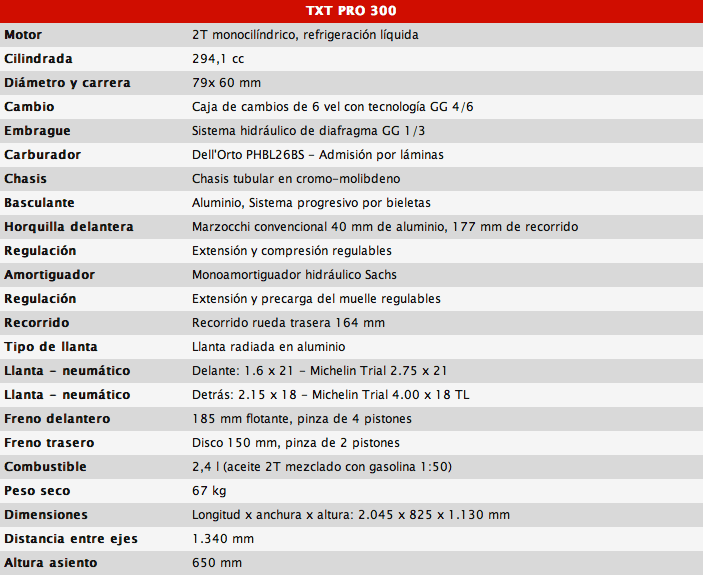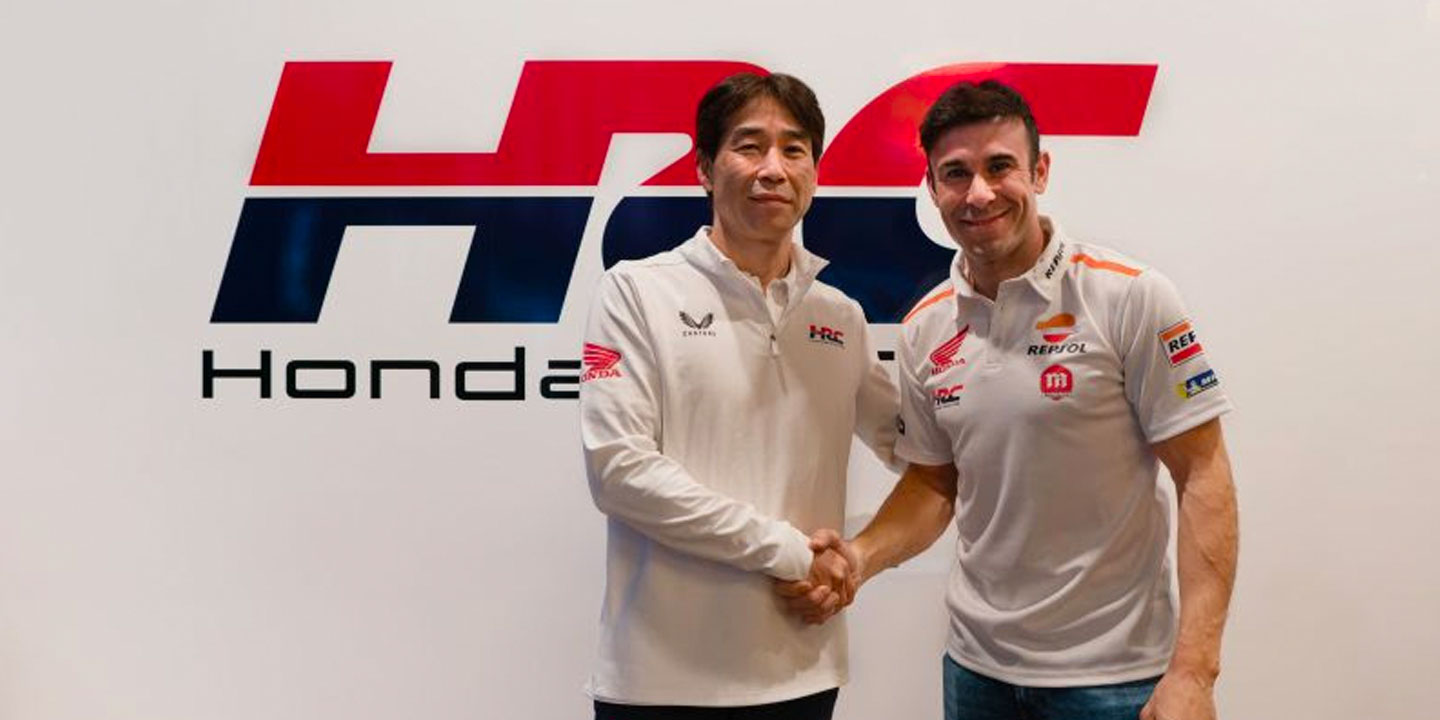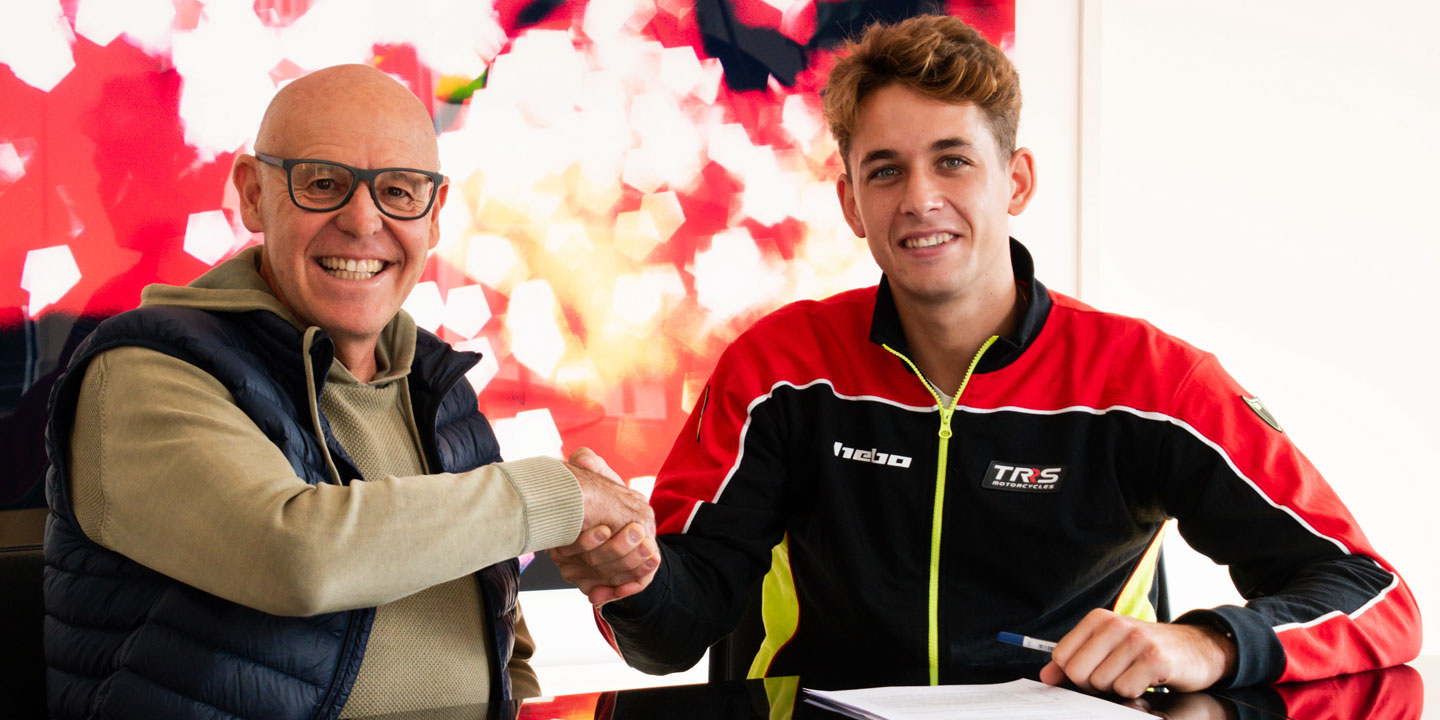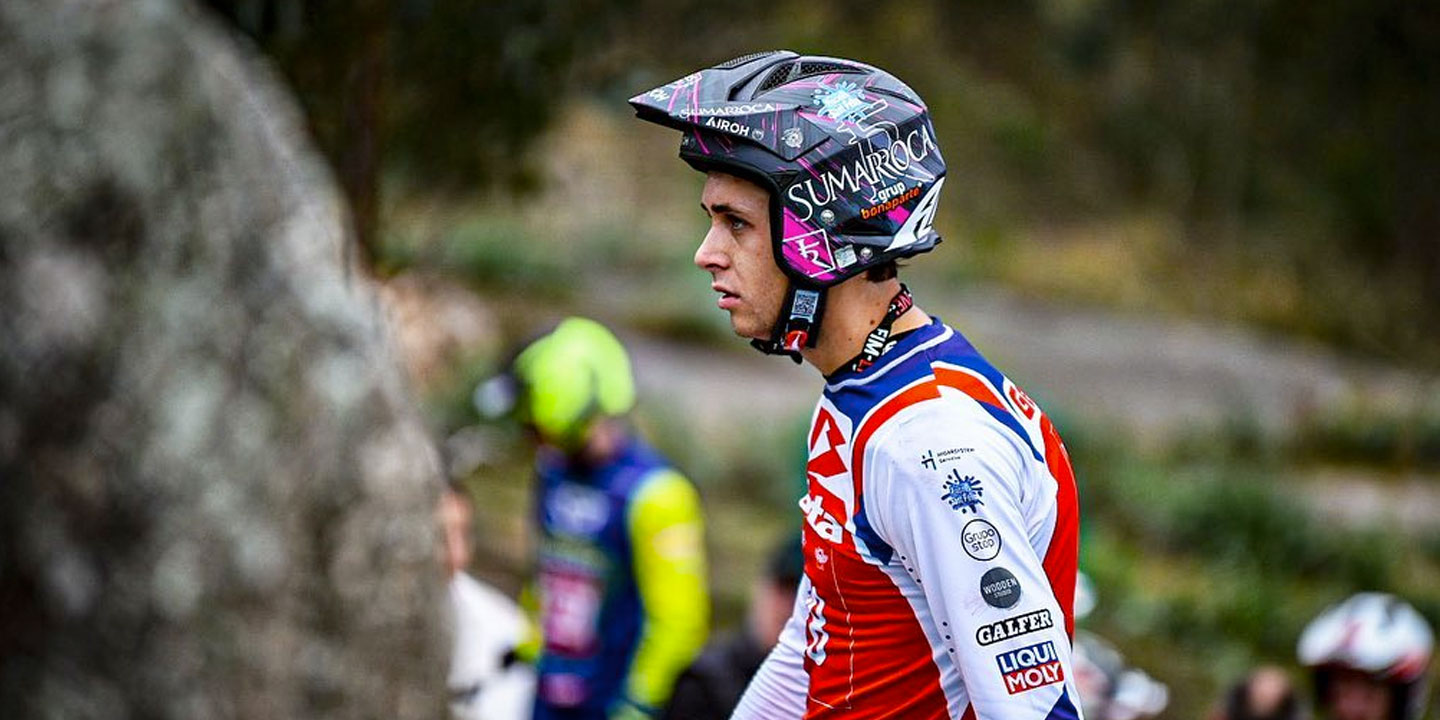Trial is a segment where the offer of models is, in proportion to the number of fans, very high. There are eight brands with models in the catalogue whose displacements exceed a quarter of a litre, where we must add that, except for Ossa, Scorpa and Montesa, they offer at least two engines. If we add to this the fact that at least half of these brands launch two or more limited editions throughout the year, we have an account with more than 20 models from which each consumer must choose just one.
Since it is impossible for every fan to try each and every one of them, we end up trusting the recommendations of our dealer or, in the best of cases, references among friends.
In order to shed more light on this issue, Trialworld has chosen to produce our first test of 2013 in a comparative format. To do this, we travelled to Andorra and faced two of the three other models of the TXT Pro range: the Raga Replica and the standard version.
Is more better?
2013 marks 10 years since Gas Gas decided to launch a limited edition of its TXT Pro under the name “Raga Replica”. Encouraged, perhaps, by restoring confidence to a consumer who had faced two editions – 2002 and 2003 – of compromised reliability, Gas Gas got this strategy right. He managed to deseasonalize the moment of purchase even more and today there are many fans who wait for June, and not September, to change their bike. Logically, Sherco did not take long to launch its “R” or “Cabestany” versions, Ossa its “Factory R” or “SSDT centenario”, Beta its “Factory”, Scorpa its “anniversary”, and even Montesa its “Repsol Edition”, although the latter would end up grouping the launches in September.
Gas Gas has always wanted to give the “Raga Replica” a special look. Curiously, from 2009 onwards even the colours of the frame began to vary from each other to further accentuate the personality of each version. As far as our protagonists are concerned, both inherit the chromatic line of their predecessors, although improving the quality and feel of their graphics; They coincide in reinforcing their corporate spirit with the presence of the name on the sides of the filter box.
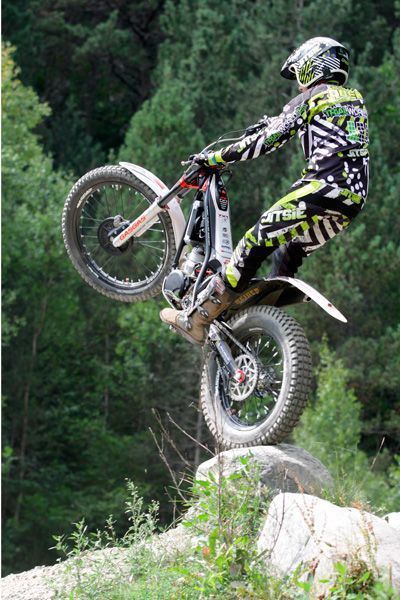
Going down to the detail, The differences between the two are easily deduced. The most important one lies in the suspension set; while the standard maintains the Marzocchi – Sachs scheme, the Raga mounts for the second consecutive year an adjustable 3-way Reiger shock absorber , this time combined with a new Tech fork. As you can see, these are completely different outfits.
Mechanically , the most remarkable thing is that the Raga comes equipped with a Keihin carburetor in the 280 and 300 versions, keeping the 250 and the entire TXT range as standard with the classic and effective Dell’Orto.
As far as the rest of the components and details are concerned, the Raga comes very well finished, while the 2013 even falls a little short. The eccentrics of the rear end are, for example, night and day. Other nice details of the Raga are the Renthal handlebars or the S3 footpegs. Aesthetically, the rims receive a black and red anodized for the fork posts.
What’s new about Gas Gas 2013? Nothing remarkable about the 2012 model. It inherits from the Raga the quick removal system of the selector axle, a new link in the rear shock absorber and new brake and clutch master cylinders.
About the controls
Gone are the years when the TXT Pro was labeled as an unreliable bike, with little robustness and demanding intensive maintenance. Gas Gas has been able to polish and evolve the TXT with wisdom, innovating strongly when it should -2006, 2009 and 2011- and above all, where it should -part cycle-. Despite not winning international titles since 2006 , Gas Gas has maintained a leading position in the market and the technological course has been correct – unlike Beta, Montesa, Scorpa and Sherco, it did not launch its 4T model.
The fact that in 2010 brands such as Ossa or Sherco launched models of compromised reliability, added to the neglect of Montesa, favored the migration of fans of these brands to Beta and Gas Gas. In 2013 the situation is very different: Jotagas is on the market with an acceptable maturity, Ossa fights with a great bike against his own fame and Sherco has an extraordinary ST.
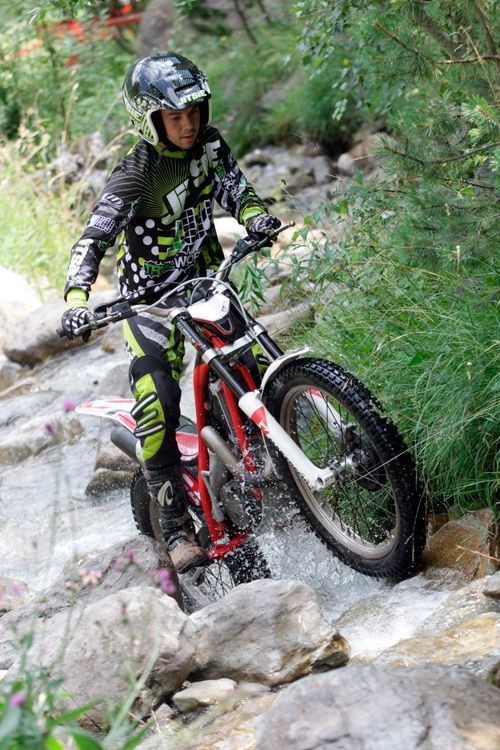
This scenario would not invite Gas Gas to relax, but the 2013 range does demonstrate prudence and continuity. It doesn’t even feel chromatically different; You have to look very carefully to find differences at first glance with a 2012, and even with a 2011. In the Raga they have put more meat on the grill and could well have been more generous as a donor of components over the 2013.
Once you get behind the wheel, you notice important differences between the two. It’s worth enjoying the extraordinary S3 footpegs and Renthal handlebars; It is a very personal and sensational matter, but the geometries and quality in the only components that connect the joint/pilot binomial are appreciated.
The TXT is a very noble and stable bike. From the first moment you feel that the distribution of the masses is optimal , without vices, breathing, in addition, a sporty character that will not bother lovers of long distances either. Start-up, with both the Dell’Orto carburetor and the Keihin, is uncomplicated.
It is enough to travel the first few meters to be grateful for the return of the AJP controls , replacing the mediocre Formula pumps that Gas Gas, like most other brands, was forced to mount in its standard range. Now the feel is less spongy and the rider gains sensitivity during the first third of the course, which is the most decisive in Trial. The Gas Gas clutch is one of the most progressive on the market, making it easier for the rider to adapt and achieving sweeter reactions that will be appreciated, especially by the less experienced. Comparing, on theBeta the clutch is more on/off in this first third of the travel, while on the Sherco , although it is more progressive than the latter, it starts to work too close to the handlebars. Ossa and Jotagas , on the other hand, offer a behavior more similar to that of Gas Gas.
Cycle part. The main key.
The merit of Gas Gas does not lie in having two “Pro” versions in the catalogue, but in knowing how to give a more “R” character to one of them, without falling into the mistake of making the other one next to it look decaffeinated. To fully understand both personalities, we must focus on the behavior of the suspensions and know if they meet the demands of the target audience.
Gas Gas was a pioneer in launching the Marzocchi with aluminum bars in 2006 and to this day it is still in the catalog. Its behaviour is impeccable: smooth, progressive and capable of withstanding strong receptions in an exemplary manner. It’s ideal for entry-level and mid-level riders; those who ride sportier will probably miss quicker, more stable reactions.
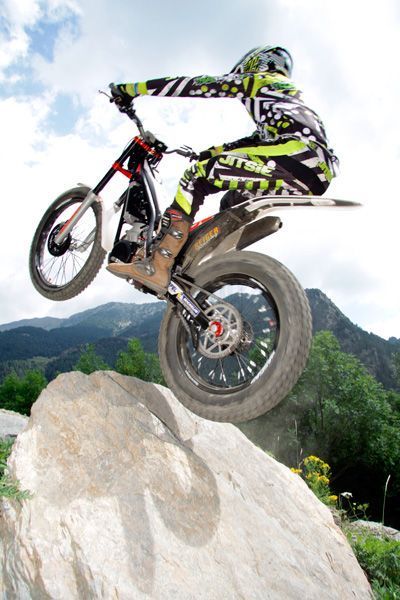
The Tech fork of the “Raga”, on the other hand, starts with the disadvantage of being somewhat heavier. The positive thing is that its internal components are of higher quality and its dynamic response corresponds perfectly to what a “top” rider demands. Faster reactions, poise and stability are its main assets.
At the rear, the Reiger shock absorber is, with the permission of the Showa de la Cota, the best on the market. It traces the terrain to perfection and offers very noble reactions. The Sachs is more rebounding and perhaps helps the average rider more in the obstacles, while for high-level practice his reactions are somewhat unpredictable and the bike does not hold its position as accurately in the most demanding obstacles.
In short, it is what it should be. At the level of the chassis the standard TXT is more effective for the needs of the rider with a basic and intermediate level, without neglecting the most demanding. Of course, the latter will miss more precision. That’s where the “Raga” comes in with its successful Tech-Reiger scheme.
Tailor-made engines
Gas Gas is the only brand that offers three different engines – over a quarter of a litre- of the same model -JTG will also do so-: 250, 280 and 300cc. If we add to this the possibility of incorporating the Keihin carburetor in the two superior versions of the “Raga”, we have a total of five options under the same body.
The Keihin adds more character to the bike, but traditionally it’s not as easy to tune up as the Dell’Orto. If you’re not a “top” pilot, we recommend sticking with the Dell’Orto. Either way, Gas Gas delivers the “Raga” as standard with the Dell’Orto and the Keihin – only on the 280 and 300 – in a separate box, so you can try both options until you’re convinced.
The most important thing will be to choose the right displacement. Here we must release a spear in favor of the most complete version and, probably, also the least popular: 250. Progressive, intuitive and with good torque, this displacement makes things easy for the rider, especially in the low rev range, where it is easy to modulate power and gain effectiveness in low-traction corners. In Trial, having more isn’t always better. Perhaps quite the opposite. It’s better than learning to find more engine performance through the throttle grip, than putting one foot behind the other because the bike overtakes us at the exit of every turn.
The 280 is even more nervous than the 300. The latter offers a lot of torque and is perhaps the ideal bike for XL riders or those whose riding style is more conducive to working at low revs, high gears or simply like to carry a lot of engine in the right grip. The 280 is rabid, indiscreet, wild and perfect for demanding riding where quick reactions are demanded.
Any of the three engines offer top-notch performance and absolute reference in the market. It is difficult to look for a weak point in the Girona engine. Perhaps, the most difficult thing is to choose the right one for your riding and demands.
In short, Gas Gas faces a new edition with top-of-the-line products in terms of performance and components. The effectiveness of the 2013 range is the result of constant work, but it does not bring anything new, neither aesthetically nor functionally. It lacks the hook and arguments to convince the consumer to change motorcycles for mere pleasure; It will probably be more captivating to those who are in need or looking for a change of scenery. An alternative to this change of scenery can be the “Raga”. The technical arguments are powerful, but its appeal is reinforced by the generous list of small components and details that set this special version apart.
Gas Gas TXT Pro 300 2013 Price: 5.843,9 €
Price Gas Gas TXT Pro Raga 300 2012: 6.632,6 €
Text and photos: David Quer / Action: Chema Quer
